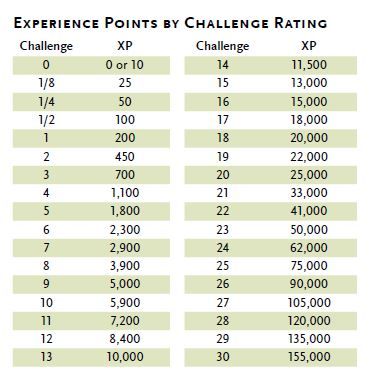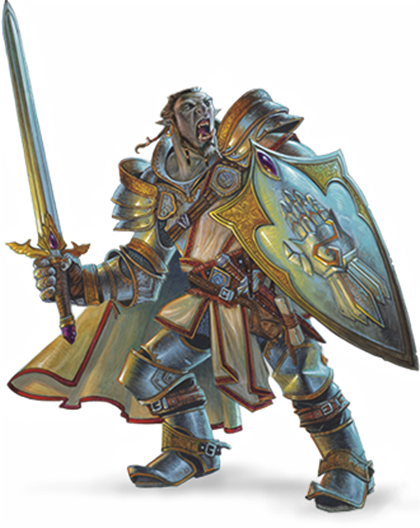Challenge Rating 5e (5th Edition) – How to Use CR
Contents
Challenge Rating 5e was a technician presented in Dungeons & Dragons 5e to attempt to make it simpler for DMs to pass judgment on what sort of beasts was appropriate to set up against their gathering and give them a sensible possibility of succeeding. It… didn’t fill in as arranged. On paper, a beast with a specific Challenge Rating is a challenge for four-player characters whose level matches the number. The number depends on a normal of Hit Bones, Defensive layer Class, Spell Opposition, Harm Decrease, harm yield, and every single other capacity it may have. While the idea appears to be sufficiently straightforward, by and by it implies that the occasions you run into low-level beasts with exceptionally high HD or air conditioning, high harm yield, or have capacities that either incur a constant impact that a gathering of that level can only with significant effort manage or by and large execute you, it’s not simply the DM being a dick.
Challenge Rating 5e
More regrettable yet is that sure resistances are a lot harder to manage for lower-level characters, with wererats specifically being low in CR yet high incapacity to mulch first-level gatherings with no simple method to sidestep their harm decrease. Swarms and spiritual animals are famous for being low CR however inconceivable for low-level gatherings to harm.
A lot of beasts didn’t have the right CR esteems in any case: Winged serpents were deliberately under CRed to make them manager beasts (disregarding how supervisor beasts should be over the gathering’s typical CR in any case) and a House Feline is deadlier than certain things twice its CR, while a Monstrosity Mage is inadequate against level fitting adversaries.
Check also: Sorcerer 5e
Trouble, Peril, and Passing. Have you at any point played Cells and Mythical serpents, like D&D 5e, and seen how Beast Experience Trouble turns out to be progressively unusual at an elevated level? Ever asked why? Then again, ever hosted a low-level out Gathering Murder (TPK)? The characteristics that truly make experiences in D&D 5e troublesome or risky, don’t generally come down to Challenge Rating 5th Edition.
Balancing Encounters Using XP Thresholds
| Level | Adjusted XP Per Day |
|---|---|
| 1st | 300 |
| 2nd | 600 |
| 3rd | 1200 |
| 4th | 1700 |
| 5th | 3500 |
| 6th | 4000 |
| 7th | 5000 |
| 8th | 6000 |
| 9th | 7500 |
| 10th | 9000 |
| 11th | 10500 |
| 12th | 11500 |
| 13th | 13500 |
| 14th | 15000 |
| 15th | 18000 |
| 16th | 20000 |
| 17th | 25000 |
| 18th | 27000 |
| 19th | 30000 |
| 20th | 40000 |
What makes for Fatal Experiences? Utilizing this guide, you as a Prison Ace can more readily adjust experiences, or simply modify trouble up or down significantly. What’s more, you as a D&D Player can move toward the game all the more strategically. I differentiate Evident Challenge Rating and Real Challenge Rating and talk about Challenge Rating Insecurity.
XP Per Encounter Thresholds
| Level | Easy | Medium | Hard | Deadly |
|---|---|---|---|---|
| 1st | 25 | 50 | 75 | 100 |
| 2nd | 50 | 100 | 150 | 200 |
| 3rd | 75 | 150 | 225 | 400 |
| 4th | 125 | 250 | 375 | 500 |
| 5th | 250 | 500 | 750 | 1100 |
| 6th | 300 | 600 | 900 | 1400 |
| 7th | 350 | 750 | 1100 | 1700 |
| 8th | 450 | 900 | 1400 | 2100 |
| 9th | 550 | 1100 | 1600 | 2400 |
| 10th | 600 | 1200 | 1900 | 2800 |
| 11th | 800 | 1600 | 2400 | 3600 |
| 12th | 1000 | 2000 | 3000 | 4500 |
| 13th | 1100 | 2200 | 3400 | 5100 |
| 14th | 1250 | 2500 | 3800 | 5700 |
| 15th | 1400 | 2800 | 4300 | 6400 |
| 16th | 1600 | 3200 | 4800 | 7200 |
| 17th | 2000 | 3900 | 5900 | 8800 |
| 18th | 2100 | 4200 | 6300 | 9500 |
| 19th | 2400 | 4900 | 7300 | 10900 |
| 20th | 2800 | 5700 | 8500 | 12700 |
Challenge Rating is a rating that is given to animals, traps, and certain different occasions and is utilized as a gauge of how hazardous that specific experience is. Challenge Rating 5e accepts that a gathering of a Warrior, a Minister, a Wizard, and a Rebel with a normal level equivalent to the Challenge Rating will exhaust roughly 25% of their superfluous assets during the experience. It is connected to the Experience Level. The Challenge rating of an animal is utilized to decide how a lot of fortune (alongside the beast’s passage for this situation) and experience the beast gives.
The crucial step is adjusting the game time in the same number of sessions as you can to address every one of your player’s “styles”, and as yet have the opportunity to oversee NPCs and Beasts with the quiet senses that you will most likely pick up with time.


